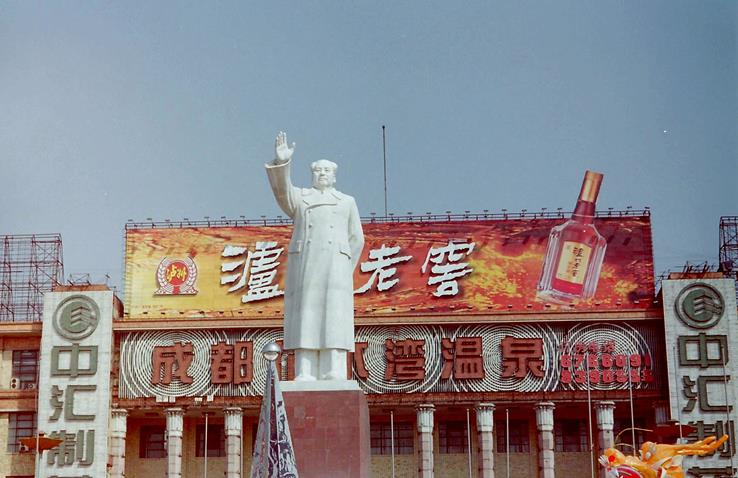The United States finds itself at a geostrategic crossroads. The moment is comparable to the period between the dispatch of George Kennan’s “Long Telegram” from Moscow in February 1946 suggesting a new strategy for relations with the USSR, and the announcement of the Truman Doctrine in March 1947, pledging U.S. political, military, and economic assistance to the countries threatened by Soviet aggression or Communist insurgency.
It took a year for Kennan’s analysis of Soviet motives and behavior to develop into the basis of America’s Cold War strategy. Containment was a sophisticated concept requiring decades of perseverance, from the Berlin airlift to the fall of the Berlin Wall. In the end it worked just as Kennan had predicted: it created conditions for the nonviolent implosion of the Soviet empire due to its own internal contradictions.
Four generations later, the key global issue is whether the U.S. and China can manage their relations without a war. History teaches us that major wars usually result from the confrontation between a status-quo power and a rising challenger. It’s unknown whether the Chinese can develop a worldview in which they are not the inherently superior center of the civilized world; and for the U.S. to accept that it will have to live with another, equal, and eventually possibly stronger superpower.
February 2020 marked the beginning of the current, coronavirus-induced but deeply rooted crisis in U.S.-China relations. Four months later, a new U.S. strategy for dealing with Beijing seems to be taking shape, judging by President Donald Trump’s address on May 29 in which he presented a long list of China’s transgressions. Some of them are of long standing, notably China’s bid to establish domination in the South China Sea. Some are not: Xi Jinping is using the focus on COVID-19 to present new faits accomplis which normally would be considered more contentious.
Notably, China has taken decisive steps to dismantle Hong Kong’s special status. China’s rubber-stamp legislature approved a plan to expand the central government’s power to quash any form of “sedition, secession, and subversion” in the former British colony. This was a major step towards ending the one nation, two systems arrangement stipulated under the 1997 agreement between London and Beijing.
On the economic front, Trump’s announcement that the U.S. would end granting Hong Kong special privileges will not make much difference to China’s calculus. Beijing’s most pressing task is to recover or enhance its grip on global markets. China was able to return industrial production to pre-virus levels by the end of March. Remarkably, its industrial production recorded a drop of only 1 percent in the first quarter of 2020. As most of the developed world remained under lockdown, it appears that the intention was twofold: to demonstrate the superiority of the Chinese model of authoritarian governance over the disordered “Western” brand in a time of crisis; and, once the lockdown is over, to make Chinese products available immediately, in plentitude, and at rock-bottom prices.
The medium-term goal is to dissuade its export markets from restructuring supply chains and thereby reduce dependence on Chinese imports. The long-term objective is to continue developing its economic dominance, establishing de facto client-rentier relationships with consumer nations, and steadily increasing advantage in human and material resources over North America and Europe. All along, reestablishing China’s economic, technological, and military rise to become the preeminent power of the century remains the leadership’s overriding political objective.
What should America do? The leaders of the Committee on the Present Danger: China—including Frank Gaffney, Newt Gingrich, and Stephen Bannon—have declared that a concerted pushback against Beijing should aim for regime change in the Forbidden City. They and congressional China hawks like Sen. Marco Rubio are framing the contest as an existential struggle between two incompatible civilizations and global-strategic paradigms.
Trump and his team would make a historic mistake to adopt this strategy, which carries a major risk of thermonuclear war. The alternative is a policy of firm and vigilant containment, coupled with the reduction of economic dependence on China. The U.S. can and should develop an intellectually coherent, Kennanesque long-term strategy of moderating China’s behavior. The Middle Kingdom is a rival to be checked, not an enemy who must be fought.
This can be done because the decision-makers in Beijing are rational players who can balance costs and benefits. Risking war with them is unnecessary. The U.S. is still the most powerful state in the world, uniquely safe from direct threats by foreign state actors. The challenge it faces from China is therefore entirely dependent on the definition of her interests and on the understanding of her grand-strategic objectives.
[Image by Calistemon / CC BY-SA 4.0 via wikimedia, cropped and resized]

Leave a Reply